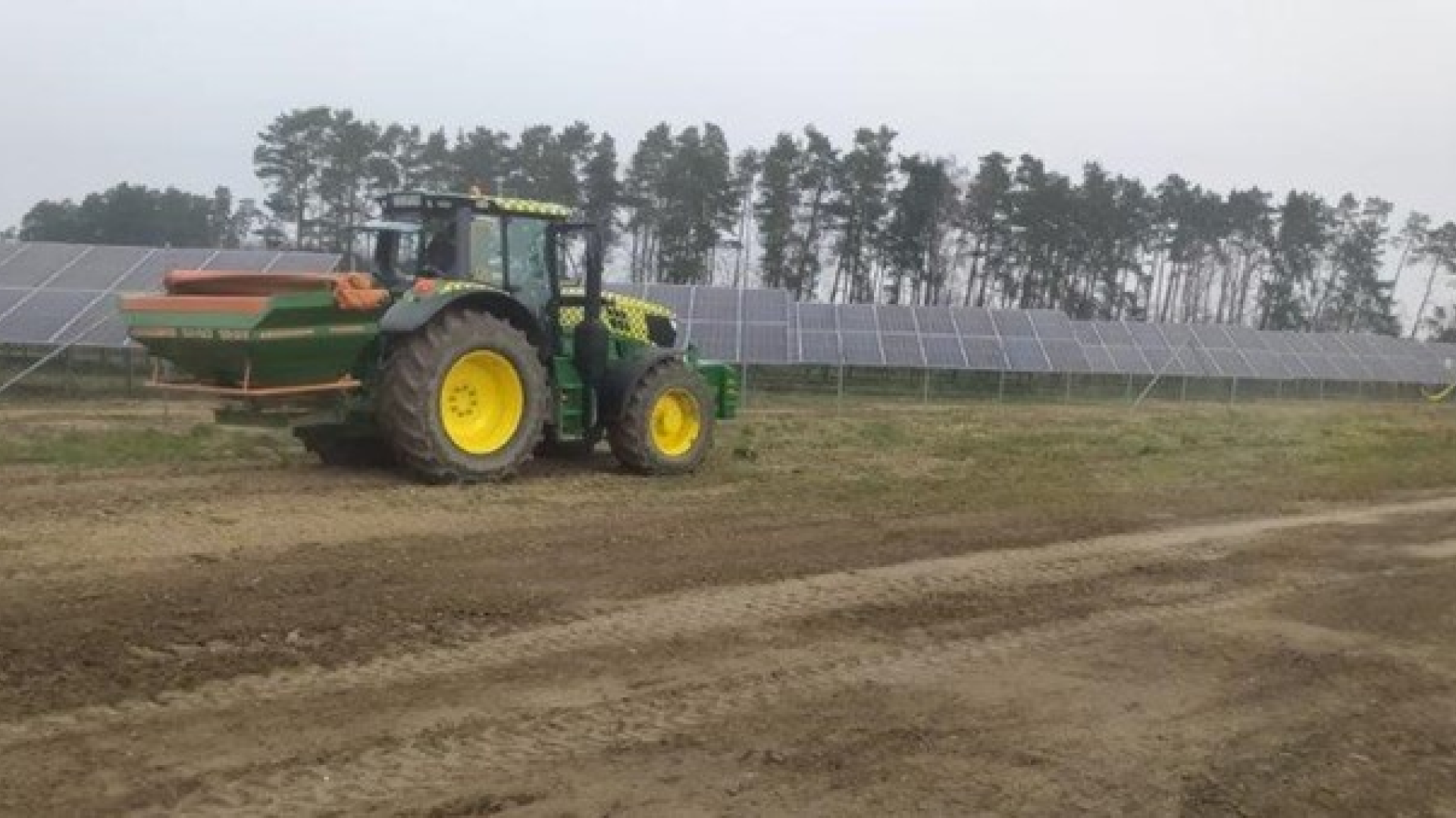- Polenergia Group
- Environment
- Society
- Management
Our large-scale photovoltaic farm projects are not only about increasing renewable energy capacity in the Polish power system.

They also represent a tremendous opportunity to rebuild meadow ecosystems on plots that have previously been used as intensive monoculture agricultural fields. We are aware of this because in 2020, when we put our first PV farms into operation (Sulechów), we planted flowering meadows and pastures with blooming species on them, and we have been conducting ecological monitoring of these areas.
In 2023, we initiated a collaboration and jointly conducted a year-long monitoring with naturalists from the University of Lubusz covering all groups of plants and animals, including pollinating insects. These studies revealed an even greater utilization of this area compared to previous years and a tremendous increase in biodiversity, which surprised even the researchers themselves!


Utilizing the space between panels by sowing native plant species there means creating a multi-hectare area that can be utilized by pollinating insects. It also serves as a habitat for small mammals, forming the food base for many species of birds and predatory mammals. Agriculturally unused areas also act as zones with increased rainfall retention.
The monitoring of biodiversity stems from the ethical values adopted within the Polenergia Group as well as the goals set in the ESG Strategy regarding environmental protection due diligence. Creating spaces dedicated to nature and ecosystem restoration is one of the main goals of the adopted in 2024 Biodiversity Strategy.
Therefore, we consistently collaborate with naturalists during the pre-construction and construction monitoring of new PV farms. Through collaboration with naturalists familiar with local conditions, we can create the best plant mixtures for sowing in a specific location. This was the case with the area of the newly constructed photovoltaic farm in Strzelino. This month, we sowed mixtures of nectar-rich plants and grasses on a total area of 1.3 hectares. So far, Canadian goldenrod has been growing on the PV Strzelino, which is an invasive species threatening native flora and insects. Based on studies conducted at PV Sulechów, we are convinced that invasive goldenrod species are naturally displaced by native species, such as snake root, which is included in the mixture sown in Strzelino.
In addition to sowing meadows, planting shrubs has also been planned, for which four areas totaling 8816 m2 have been designated. Among the selected species are sea buckthorn, hawthorn, blackthorn, and wild rose – a total of 2205 seedlings will be planted, providing shelter and food bases for animals.



By managing the areas of photovoltaic farms, we can create unique enclaves and restore meadow ecosystems. It is incredibly important for similar practices to be adopted by other investors in PV projects. It is also crucial for farmers to know that proper management of meadows adjacent to their monoculture crops positively impacts their yields (by increasing the quantity and diversity of pollinating insects).
To raise awareness about the opportunities provided by photovoltaic farms, we will collaborate with researchers from PV Sulechów to prepare publications collecting experiences and research from our photovoltaic projects.
Szanowny użytkowniku, w zgodzie z założeniami RODO potrzebujemy Twojej zgody na przetwarzanie danych osobowych w tym zawartych w plikach cookies. Dowiedz się więcej.
The cookie settings on this website are set to "allow cookies" to give you the best browsing experience possible. If you continue to use this website without changing your cookie settings or you click "Accept" below then you are consenting to this.